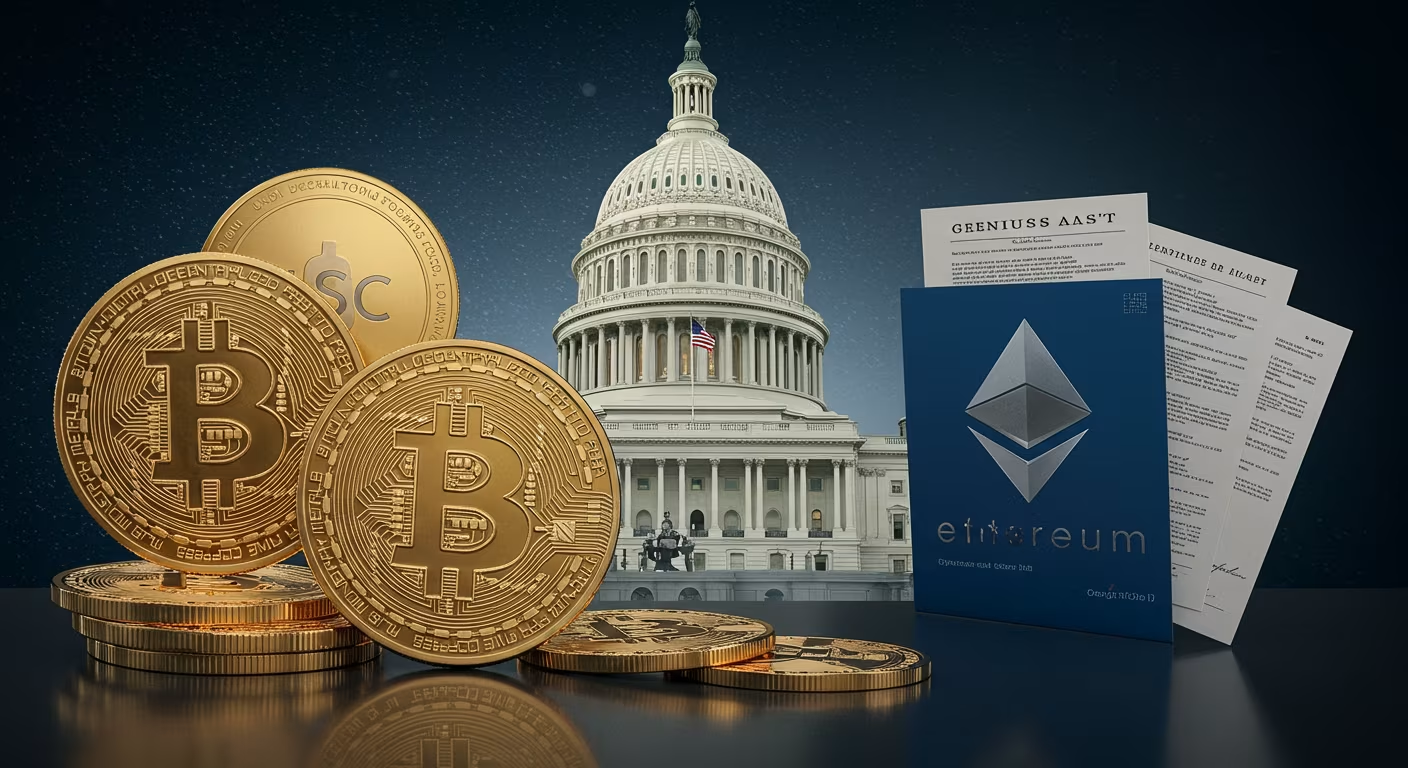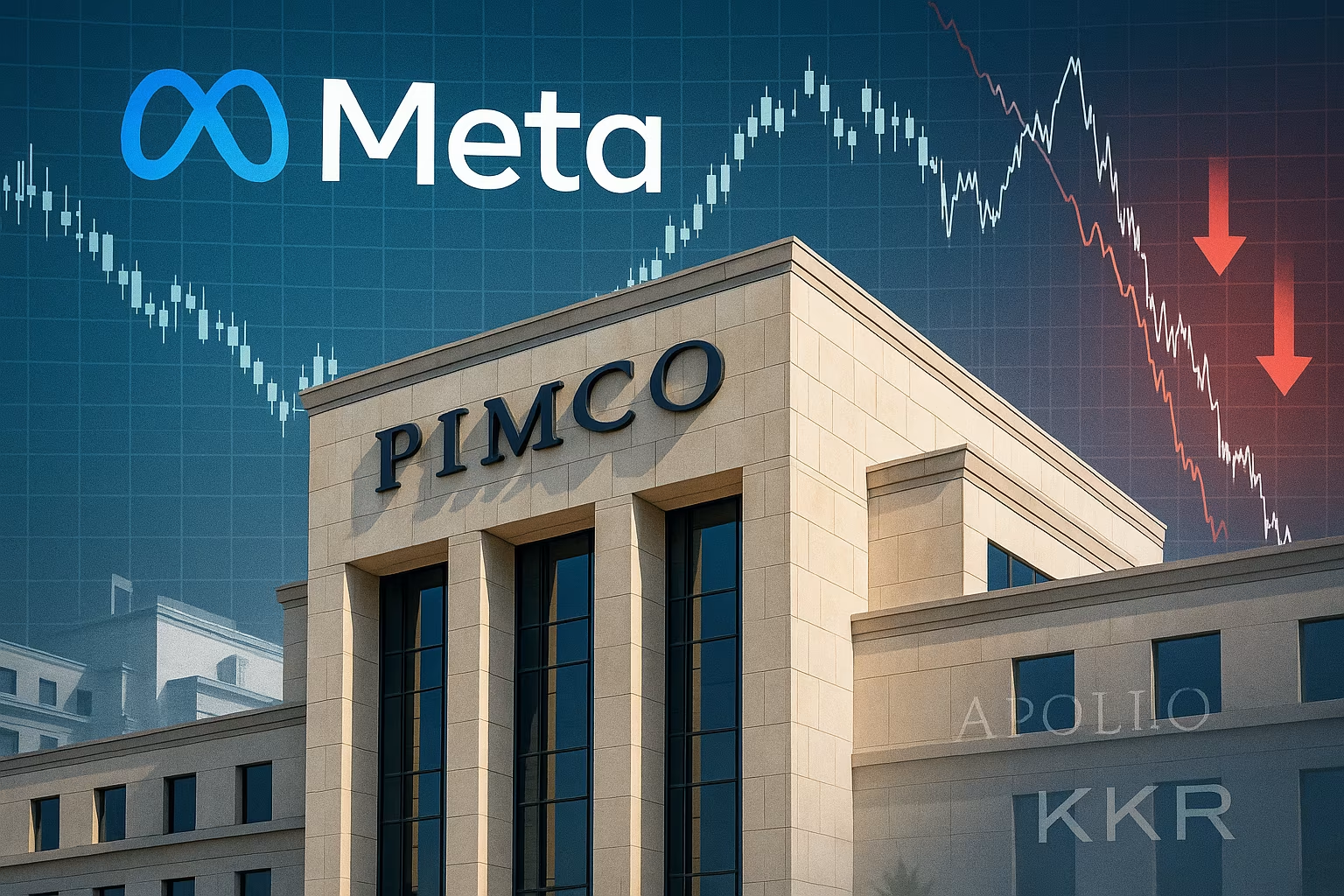In a milestone moment for digital finance, the global cryptocurrency market capitalization has officially surged past $4 trillion, driven by a powerful combination of institutional momentum, increased investor confidence, and the passage of the GENIUS Act—a transformative piece of U.S. legislation that establishes clear regulatory guidelines for stablecoins and digital assets.
The Guidelines for Enhancing National Innovation in U.S. Stablecoins (GENIUS) Act has been hailed as the most significant crypto regulation effort in U.S. history, and its passage is being credited with unleashing a new wave of capital inflows, enterprise adoption, and global investor participation. As of the latest market snapshot, Bitcoin, Ethereum, and a wave of DeFi and tokenized assets are seeing record valuations, while traditional financial firms ramp up their blockchain initiatives with renewed enthusiasm.
This dramatic shift signals the beginning of a more mature, regulated, and trusted era for the digital asset class—one that may have profound implications for finance, innovation, and the global economy.
What Is the GENIUS Act and Why Does It Matter?
The GENIUS Act, passed with bipartisan support in Congress, introduces a comprehensive framework for the issuance, regulation, and use of U.S.-backed stablecoins and broader digital asset infrastructure. Its key components include:
- A federal licensing system for Qualified Digital Payment Institutions (QDPIs)
- Mandatory 1:1 reserve backing for stablecoins with high-quality liquid assets
- Standardized audit and transparency requirements
- Clear consumer protection provisions
- Defined interoperability and smart contract standards
- Tailored oversight shared between the SEC, CFTC, and Treasury Department
For years, crypto markets have been plagued by regulatory ambiguity. The GENIUS Act resolves much of that uncertainty by delivering clarity to businesses, developers, and investors—particularly regarding what is permissible, how digital dollars should be structured, and how innovation can align with financial stability.
The Market Reaction: A $4 Trillion Milestone
Within hours of the GENIUS Act becoming law, crypto markets saw an explosive rally. Bitcoin crossed $90,000 for the first time, while Ethereum surged past $6,000, fueled by expectations of greater institutional inflows and reduced legal risk. Major stablecoins like USDC and USDP also saw significant increases in supply and on-chain usage, with liquidity pools across DeFi protocols expanding rapidly.
More broadly, investors interpreted the legislation as a green light for broader digital asset integration into the U.S. economy. With the world’s largest economy embracing stablecoin frameworks and blockchain transparency, sovereign wealth funds, pension managers, and fintech companies are accelerating exposure to crypto-based products.
The result? A total market cap that pushed beyond $4 trillion, led by:
- Soaring valuations in Layer-1 smart contract platforms
- Explosive growth in tokenized real-world assets (RWA)
- Renewed investor interest in DeFi 2.0 protocols with strong governance
- Strategic moves by tech firms to launch GENIUS-compliant payment apps and wallets
- Increased M&A activity among exchanges, custodians, and blockchain startups
Stablecoins Go Mainstream—Safely
The GENIUS Act provides stablecoins with formal regulatory status, encouraging their integration into mainstream finance. With strict reserve backing, licensed issuance, and consumer redemptions guaranteed, stablecoins are now seen as legitimate digital equivalents of the U.S. dollar—enabling:
- Faster payroll and remittance systems
- Smart contract-based lending and payments
- Blockchain-based government transfers and benefit programs
- Tokenized treasury bill products and digital cash equivalents
Major banks and fintech platforms have already announced plans to issue GENIUS-compliant stablecoins, offering programmable money with the backing of regulatory certainty. This has triggered a broader shift in global financial architecture, with central banks and regulators from the EU, Singapore, and Japan signaling intent to align with the U.S. model.
Institutional Adoption Accelerates
The legal clarity provided by the GENIUS Act has also removed a major barrier to institutional participation. With defined rules for custody, compliance, and asset classification, financial giants such as BlackRock, Fidelity, JPMorgan, and Citi are doubling down on crypto-native products, including:
- Tokenized bond issuance
- Real-time blockchain-based settlement systems
- Regulated DeFi investment platforms
- On-chain risk modeling and asset tokenization
The act also encourages public-private partnerships to test blockchain-based payment rails, supported by the FedNow instant payment infrastructure. This means traditional finance and decentralized ecosystems are no longer at odds—they’re finally converging under a compliant, transparent framework.
Consumer Trust and Innovation Rebound
Perhaps most importantly, the GENIUS Act restores consumer trust in a space that has been heavily affected by exchange collapses, fraud, and volatility. With clear rules around custody, redemptions, audits, and disclosures, users feel safer holding stablecoins, interacting with dApps, and exploring blockchain-based services.
Developers, too, now operate in a more predictable environment. Rather than navigate regulatory gray areas, they can build applications that meet standardized compliance protocols—spurring a new wave of wallet innovation, identity solutions, and financial access tools.
Global Implications of U.S. Crypto Clarity
With the U.S. now embracing a proactive regulatory stance, other governments are reevaluating their approach to crypto. The GENIUS Act may become a template for international digital asset regulation, creating global standards for transparency, stablecoin reserves, and cross-border compatibility.
It also strengthens the U.S. dollar’s digital dominance. As more global institutions begin settling transactions in tokenized USD backed by audited reserves, the dollar’s influence in the emerging digital economy grows—countering concerns about currency fragmentation posed by CBDCs and private tokens.
What’s Next for the Crypto Industry?
With the $4 trillion milestone passed and a favorable legal framework in place, the crypto industry is expected to enter its most constructive phase yet. Analysts predict:
- The rise of crypto ETFs and tokenized securities with mainstream appeal
- Growth in sovereign and corporate tokenization of assets (equity, real estate, debt)
- Consolidation among exchanges and infrastructure providers
- Regulatory harmonization efforts between the U.S., Europe, and Asia
- Deeper integration of blockchain rails in consumer finance and Web3 apps
In essence, the GENIUS Act has normalized crypto finance—removing friction, building trust, and unlocking growth.
A New Era for Digital Assets Begins
The surge of the crypto market cap past $4 trillion is not just a number—it’s a reflection of newfound legitimacy, regulatory confidence, and future promise. The GENIUS Act has done what few believed possible: creating a regulatory structure that supports innovation, protects consumers, and anchors digital assets within the financial mainstream.
As institutions, developers, and investors rally around this new era, the next wave of crypto adoption is poised to be bigger, smarter, and more secure than anything the industry has seen before. The blockchain economy is no longer a frontier. With the GENIUS Act, it has officially entered the global financial system.





